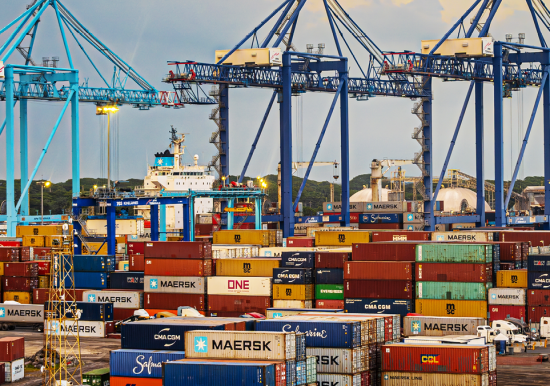
Singapore: A Story of Self-Reliance
When Singapore gained independence in 1965, the country faced a myriad of challenges: lack of natural resources, large urban slums and squatter communities, and a colonial-era economy based on entrepôt trade that could not generate enough jobs to sustain a rapidly growing population. In just 55 years, Singapore has become one of the most prosperous nations in the world. Forward planning, budgetary prudence, and an unwavering culture of self-reliance have laid the foundations for remarkable economic growth.
To appreciate Singapore’s fiscal strategies, it is important to take into account its historical context. The British founded a port and settlement in Singapore in 1819, due to its strategic location along the Straits of Malacca. Singapore was later designated a Crown colony of the British Empire, and its court systems and civil service were based on British administrative and legal systems.
Following independence, Singapore faced a bleak economic outlook. Its separation from Malaysia resulted in a loss of access to a larger economic market, while the withdrawal of British troops and military spending resulted in a 16% loss of GDP. Unemployment was at 13.5% – high for a small city without basic essentials like food and water supplies – and the government faced a budget deficit of SGD 42 million (1.5% of GDP at the time).
Forward planning, budgetary prudence, and an unwavering culture of self-reliance have laid the foundations for remarkable economic growth.
First State Development Plan
As a small city-state of about two million citizens, the Singapore government focused on developing a manufacturing sector that could serve regional and global demand. The First State Development Plan (1961-1964), which focused on developing social and economic infrastructure, was valued at SGD 870 million (USD 646 million, current valuation). Approximately 40% of the plan was financed by the government, with the remaining 60% sourced from loans, primarily from the World Bank.
In the 1960s and 1970s, the country focused on large-scale infrastructure development, including the repurposing of military shipyards for commercial use, and the development and expansion of roads, public housing, and industrial parks. These projects were “bankable”, because their internal rates of return were sufficient to recover the initial investment. Infrastructure development led to growing budget deficits for the most part of the 1960s, but eventually paid dividends, allowing economic growth to pick up, and yielding a string of government budget surpluses from 1968.
Development Fund
The Development Fund was created in 1953 by the British to house financial transfers from operating revenues to finance development plans. The Fund was retained by the Singapore government post-independence and in addition to operating revenues, was also used to hold the borrowings undertaken for the First Development Plan. The Development Fund Act was enacted subsequently to allow the fund to make grants and loans to, or investments in public agencies or corporations for development projects. The fund became a consolidation point for all interests and arising profits from these loans, which could be used to repay the existing loans. By utilising the Development Fund in this manner, the government began to cultivate the principle of self-sufficiency.
Culture of Self-Reliance
As a new nation, the government focused on nurturing self-reliance, opting to raise funds domestically before borrowing from abroad, and encouraging a culture of saving for the future.
The Central Provident Fund (CPF) scheme, which has become a key pillar of Singapore’s fiscal strategies, was introduced primarily to reduce the government’s liabilities to provide for the retirement needs of the workforce. Countries usually operate public pension schemes to support a minimum standard of living for the retired workforce; these have traditionally been in the form of cash payouts. Such pension schemes are optimal when the population is young and growing, such that working contributions to the pension funds by the working population exceed withdrawals from the funds by retirees. Inadvertently with life expectancy increases, adjustments must be made to the pension system to remain self-sustained. Unfortunately, these are painful and unpopular changes which are often deferred by governments, resulting in high inflation or future generations having to bear the responsibility of shouldering the costs.

Singapore does not have a public pension scheme; instead the CPF provides for the retirement needs of the workers. The compulsory CPF scheme requires all employers and employees to contribute a portion of the employee’s monthly gross salary to the fund, which is overseen and maintained by the CPF Board. The size of the account at the end of the employees working life would determine the level of payouts that the employee would be entitled to at the age of retirement. Over the years, the Singapore government has made changes to the CPF system to allow for these savings to be used for specific purposes such as education and healthcare.
The CPF scheme was also introduced to reduce Singapore’s reliance on external loans and to raise domestic savings. Domestic savings grew as a result of the mandated contributions from both employees and employers. The CPF Board invested these savings into Special Singapore Government Security (SSGS) bonds that paid interest rates to ensure that the real value of savings were maintained. As employment levels and education standards increased, so too did salary levels, resulting in higher domestic savings for the government to tap into.
Singapore also took out loans with the UK government, the World Bank, and the Asian Development Bank. These were used solely to finance projects that supported economic development, instilling a national discipline that loans should be invested in credit-worthy projects. External loans peaked in 1978 at more than SGD1 billion, but with increasing domestic savings, eventually declined to nil in 1995.
Growing Reserves
Due to burgeoning economic growth, budget surpluses grew four-fold between 1966 and 1980, with an annual average of 10.3%. The Singapore government began accumulating budgetary reserves in the 1970s. These reserves are critical to Singapore’s system of financial stewardship.
The budget surpluses accrued by Singapore’s government are invested to earn dividends and interest. Up to half of the total investment returns can be allocated to Singapore’s annual budget for government expenditure, while the remainder of the returns are reinvested. This ensures that the real value of the accumulated reserves appreciates in the long term.
Beyond their investment value, the reserves provide an important buffer, allowing the government to finance budget deficits from discretionary stimulus or spending measures during major crises, such as the global financial crisis of 2007-2008 and the COVID-19 pandemic. Strong national reserves also enhance investor confidence in the economy and the Singapore dollar, because businesses know that the government will have the fiscal ammunition to respond effectively to unexpected crises, defend the currency against speculative pressure, and support the economy in times of recession.

To protect Singapore’s national reserves against short-term political pressures and irresponsible spending, the government introduced the Past Reserves Protection framework. With this framework, each successive government is required to balance its budget over its five-year electoral term in office. Each new government must generate its own revenues to finance its plans, while balancing its deficits and surpluses generated during its term of office. Any surpluses accumulated by each elected government are “locked up” at the end of its five-year term. The next elected government is not permitted to spend these past reserves, except with the approval of both Parliament and the elected President, who serves as the head of state.
The practice of setting aside savings to meet future demands and potential liabilities reduces the fiscal burden on Singapore taxpayers. By ensuring all liabilities are backed by assets and reserves, the government can respond adequately to unanticipated shocks, while not leaving irresponsible debts for future generations. The government’s COVID-19 response is testament to this, as it drew from its past reserves to fund support packages aimed at helping workers and businesses affected by the pandemic. The overall budget deficit for FY 2020, which totals SGD 64.9 billion (USD 48.2 billion) and is equal to 13.9% of GDP, is the largest deficit in Singapore’s history since it became independent, but Singapore’s COVID-19 support and fiscal stimulus packages have been entirely funded by government revenue and reserves, with no domestic or external borrowing.
This country profile draws on the book, Singapore’s Fiscal Strategies For Growth: A Journey of Self-Reliance, by Lee Kok Fatt (2018).
More Stories


Global Influence & Reputation Country Snapshot: Türkiye

